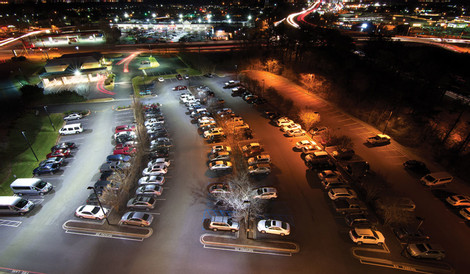According to QSR, a significant study from New York City demonstrated how new LED lighting technology can have a positive impact on deterring crime. The study concluded that “increased levels of lighting led to a 7 percent overall reduction in “index crimes”—a subset of serious felony crimes that includes murder, robbery and aggravated assault, as well as certain property crimes—and, more specifically, a 39 percent reduction in index crimes that took place at night.”

The study focused on building developments that recently upgraded from legacy lighting sources to LEDs. After the installation, crime rates in these areas dropped significantly.
Following guidelines from the Illuminating Engineering Society of North America (“IESNA”), best practice involves providing appropriate proper illumination levels for individual space type requirements. There is a difference between a good lighting design for a certain space and the best practice for a space with security being the main priority.
LEDs also have a better color rendering than traditional lamp sources. Many area lights currently have HPS lamps, which have very poor rendering and can make individuals feel uncomfortable because they cannot see distinct features of objects in the space. LEDs allow us to see details better because of the quality of the light itself. Improved visibility and lighting helps an individual better observe his or her surroundings and respond quicker to a potential threat.
Improving the lighting and overall quality of the space will ultimately contribute to a more inviting environment for customers while keeping them safe during their visit. Not only does this improve the customer experience, it also improves the employee experience as well.
Remember, LEDs are directional and can be controlled optically, meaning it is flexible enough to accommodate different patterns of traffic flow on a typical lot and implement precise lighting where it is needed most. Safety does not mean that an area is always at risk. It could also include a level of comfort for employees as they arrive and leave work. Having higher light levels and uniform distributions help individuals with better visual acuity, which leads to feeling more comfortable in a nighttime environment.
